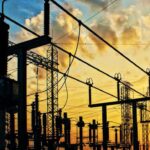China’s GDP grew 18.3 per cent year on year in the first quarter, hitting 24.93 trillion yuan (about $3.82 trillion), according to statistics released by the National Bureau of Statistics (NBS) on April 16.
The figure registered an increase of 0.6 per cent from that in Q4 of 2020 or 10.3 per cent from that in the first three months of 2019. This puts the average Q1 growth of 2020 and 2021 at 5 per cent from the 2019 level.
- Mixed reactions as IGP recalls 25 senior EFCC detectives
- Between the European Super League and Nigeria’s PIB
The relatively small number base in the first three months of last year, as well as the increased number of workdays as a result of people skipping returning home for the Spring Festival, contributed to the 18.3 per cent surge in Q1, said Liu Aihua, spokesperson of the NBS, adding that China’s economy was recovering steadily.
Facing COVID-19 in the winter-spring period and uncertainties overseas, China consolidated and expanded its achievements in coordinating epidemic prevention and control and economic and social development, Liu noted.
“In general, China secured sustained and stable recovery of its economy, achieving a good start of the year,” she said.
The country’s total retail sales of consumer goods grew 34.2 per cent year on year last month, 0.4 percentage point higher than the January-February figure.
In the first quarter, the investment in high-tech industries and social sectors registered average two-year growths of 9.9 per cent and 9.6 per cent, respectively.
Besides, the total value of imports spiked 27.7 per cent from a year ago in March, exceeding that of exports for the first time this year, which indicated a consolidated trend for the recovery of domestic demand.
In the first three months of this year, the value-added of equipment manufacturing and high-tech manufacturing enterprises above designated size, or with revenue from principal activities of over 20 million yuan, increased by 39.9 per cent and 31.2 per cent respectively year on year, with an average two-year growth of 9.7 per cent and 12.3 per cent respectively.
The growth was higher than the overall growth of industries above the designated size.
During the same period, the investment in high-tech industries grew by 37.3 per cent year on year, 7 percentage points higher than that of total investment, and average two-year growth of 9.9 per cent.
Besides, smart and low-carbon products experienced rapid growth in Q1.
The production of new energy vehicles, industrial robots and microcomputers surged 310 per cent, 110 per cent and 73.6 per cent, respectively, with all achieving double-digit two-year growth.
According to the initial estimate, the energy consumption per unit of GDP decreased 3.1 per cent in the first quarter of this year.
During the January-February period, the total profit of enterprises above the designated size increased 1.79 times, with an average two-year growth standing at 31.2 per cent.
Service enterprises above designated size achieved turnaround, and their total profit hit 169 billion yuan.
In the first quarter, the nationwide per capita disposable income reported a nominal increase of 13.7 per cent year on year, with an average two-year growth of 4.5 per cent. The income growth of rural residents outpaced that of urban residents.
In March, the Manufacturing Purchasing Managers’ Index (PMI) stood at 51.9 per cent, up 1.3 percentage points from a month ago and staying above the threshold for thirteen months in a row.
The non-manufacturing PMI stood at 56.3 per cent, up 4.9 percentage points, and composite output PMI was 55.3 per cent, up 3.7 percentage points.
The International Monetary Fund recently revised its estimation on global growth in 2021, projecting that China’s growth will hit 8.4 per cent.
“The adjustment indicated the world’s confidence in and expectation on China’s economic development of the year. The country’s economy is expected to achieve stable growth,” said Liu.
Liu noted that the economic recovery in the first quarter of this year continued, and positive factors are accumulating.
The stable recovery, as well as the advantages that China has long enjoyed, including a strong material foundation, a complete industrial system and rich human resources, lay a solid foundation for the country to further consolidate the trend of sustainable economic recovery, Liu said.
People’s Daily

 Join Daily Trust WhatsApp Community For Quick Access To News and Happenings Around You.
Join Daily Trust WhatsApp Community For Quick Access To News and Happenings Around You.


